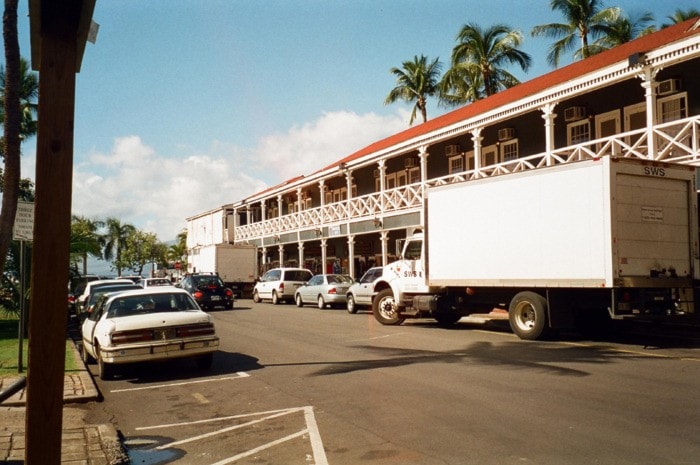LAHAINA, Hawaii — Locals and visitors alike call it "the buzz."
It's their term for the raucous nightlife in the bars and clubs along Front Street of this western Maui port and tourist town.
But no matter how lively the nights may be now, they can't compare with "the buzz" of Lahaina's early days. For a start, no one fires a cannon these days.
In the Courthouse Square stand the remains of a fort. Nearby, the old courthouse houses the local heritage museum.
Between them, they tell the tale of the days when Lahaina was as wild and woolly as any place on the planet — until the do-gooders put a stop to it.
Here's the story they tell: In the early 1800s, when most of the world depended on whale oil for its lighting, Lahaina was Hawaii's chief whaling port.
After months at sea, whalers would come ashore for what we now call rest and recreation. (Translation: booze and women.) There were wild nights along Front Street.
Then, in the 1820s, the Christian missionaries arrived and put a damper on the festivities.
For a start they got the local chief to ban the women from swimming out to greet the ships. Relations between the whalers and the missionaries went downhill from there.
Finally, after some wild roistering resulted in the whalers being sent back to their ships one night, they turned their cannon on the town. No one, it seems, was injured, but in the wake of this incident the fort was built and cannons placed along the seafront. The guns are still there but, as noted, only some stones from the fort remain.
In 1873, 50 years after the arrival of the missionaries, the town planted a banyan tree to mark the anniversary. That tree now has a dozen main trunks, rises 15 metres in the air and covers a good part of Courthouse Square.
In its plentiful shade you'll often find a flea market and stalls selling watercolours and Polynesian carvings.
Across the street is the low-slung Pioneer Inn, built in 1901 by Sgt. George Freeland of the North West Mounted Police (precursor of the RCMP), who had come to Maui in pursuit of a criminal.
This Mountie didn't get his man, so he settled here instead. His great grandson now runs the hotel, and you can view all sorts of whaling memorabilia and artifacts in the bar and dining room.
Lahaina (permanent population 9,500) is a compact and pedestrian-friendly town. Visitors should pick up a self-guided walking tour booklet and map, available in the visitor centre in the old courthouse and in kiosks around town. Historical markers give information on places mentioned in the map.
One marker — at the remains of King Kamehahena I's palace—reminds visitors that Hawaii was once a kingdom in its own right.
Lahaina was its capital from 1820 until 1845, when the seat of government moved to Honolulu, on the island of Oahu. The islands became a U.S. territory in 1900 and the 50th state in 1959.
Access
For more information on Maui visit the Hawaii Tourism Authority website at gohawaii.com/maui.
